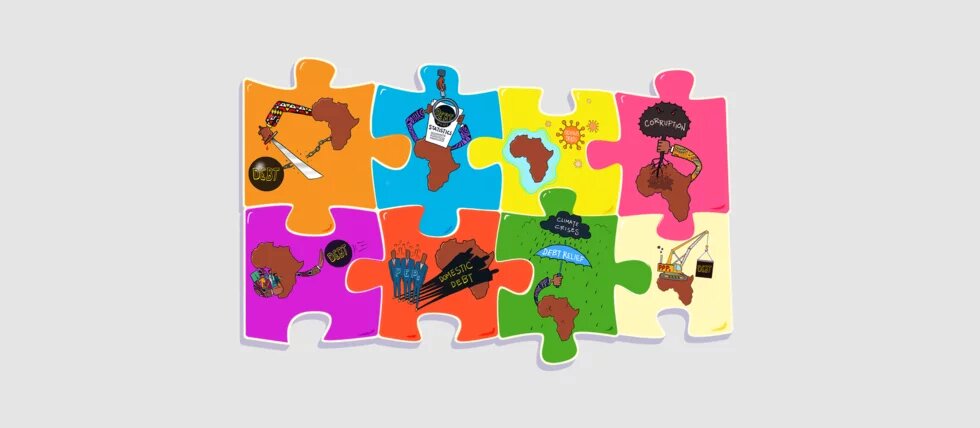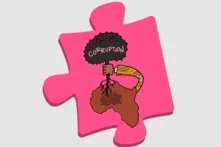Africa’s debt crisis is rapidly intensifying. Rising interest rates, climate shocks and an unfair global financial architecture are pushing many countries to the brink of default. Joe Kobuthi explains why existing debt relief initiatives fall short and which new approaches Africa needs to regain financial sovereignty.

The Beijing Summit of the Forum on China-Africa Cooperation (FOCAC) held in November 2006 marked a turning point in Sino-African relations, with China pledging US$5 billion in concessional loans and creating a US$1 billion China-Africa Development Fund to boost investment across Africa. Over the following decade, China became Africa’s largest trading partner, with trade soaring from about US$10 billion in 2001 to over US$220 billion by 2014. By 2016, China’s influence had expanded further through its Belt and Road Initiative, with the country financing major infrastructure projects – ports, railways, roads, and hydroelectric plants – with loans that came with few governance conditionalities, fostering a partnership seen by many African countries as more equal and mutually beneficial than traditional Western ties.
How debt-financed development turned into a trap
African political leaders welcomed increased access to credit amid tight global financial conditions, borrowing from China and from low-interest sources in the West following the 2008 financial crisis to finance debt-led development aimed at closing Africa’s infrastructure gap. Kenya’s President Uhuru Kenyatta strongly defended this approach, viewing debt as a catalyst for rapid development when managed well. Yet, by 2018, Kenya had to enter an IMF austerity programme amid mounting economic distress and corruption concerns, validating critics of heavy borrowing. While excessive debt was once mostly confined to resource-rich countries, since 2008, even resource-poor nations like Kenya and Ethiopia have borrowed aggressively, driven by global investors seeking yields in emerging markets. Côte d’Ivoire’s dual-tranche Eurobond issued in January 2024 exemplifies this trend. The country raised a substantial US$2.6 billion through two bonds with maturities of 9 and 13 years respectively, which attracted over US$8 billion in orders – more than three times the amount issued, reflecting escalating and often unsustainable debt accumulation.
While excessive debt was once mostly confined to resource-rich countries, since 2008, even resource-poor nations like Kenya and Ethiopia have borrowed aggressively, driven by global investors seeking yields in emerging markets.
Africa is facing a severe debt crisis as external debt surpassed US$1 trillion in 2024, doubling in just four years, and with over two thirds of the world’s low-income countries – many in Africa – either in debt distress or close to it. At least 22 African nations are in precarious debt positions, with public debt rising from 30 per cent of GDP in 2013 to nearly 60 per cent by 2024. Governments now allocate more than twice the revenue share to interest payments compared to a decade ago, often exceeding spending on critical sectors like education and healthcare, putting human development at risk. This crisis is worsened by rising borrowing costs, decreased official aid, climate shocks, and commodity price volatility, threatening to derail Africa’s development in the coming decades. Beyond the numbers lies a troubling story: for many African countries, economic progress is not just stalled, it’s slipping further out of reach. As debt pressures deepen, the continent is at a critical crossroads where urgent action is needed to prevent a decade of stagnation and lost opportunities.
Why the G20’s debt relief mechanism is failing
In this Jubilee Year, debt relief for African countries has become a significant issue on the global political agenda, including under South Africa’s presidency of the G20. To address this growing crisis, the G20 established the Common Framework for Debt Treatments in 2020. This coordinated initiative allows eligible low-income countries to seek debt relief or restructuring from bilateral creditors, including both official and private lenders, aiming to relieve unsustainable debt burdens. However, civil society organizations and think tanks have criticized the framework as a short-term fix that fails to break the cycle of debt. They argue that it does not confront the systemic problems embedded in the global financial architecture upheld by the Bretton Woods institutions.
From debt dependence to transparency and climate justice
Against this backdrop, this dossier seeks to promote discussions on how debt relief can translate into a durable fiscal space for African nations, especially as aid budgets are being cut worldwide – an unfortunate trend that further strains national budgets. Indeed, African nations are paying a steep price as debt crises deepen across the continent, with women and children bearing a disproportionate burden as social spending is slashed to service mounting foreign debt, warns Mchowa Chifundo from Malawi. From South Africa, Seeraj Mohamed argues that fighting corruption and heavy sovereign debt requires comprehensive economic reforms alongside an urgent overhaul of the flawed global debt architecture that perpetuates the debt crisis for the global majority. Rather than just presenting a financial challenge, Thokozile Madonko identifies sovereign debt as a neo-imperialist instrument designed to entrench Africa’s dependency and subordination.
Meanwhile, Demba Moussa Dembélé exposes the scandal of Senegal’s hidden debt, which amounts to a staggering 25 per cent of the country’s GDP, revealing serious transparency failures and institutional weaknesses. Catherine Mithia cautions against debt-led development strategies, terming them a folly that stalls true progress. Instead, she advocates for a paradigm shift toward investing in social sectors to foster sustainable and equitable growth with less reliance on debt. Highlighting the climate crisis, Sarah Ribbert frames debt relief as key to Africa’s pathway to climate resilience and green renewal, breaking the harmful cycle of debt vulnerability and environmental degradation. In Kenya, Mwalimu Mati exposes the shadowy beneficiaries fuelling the debt crisis, pointing to the 1971 deregulation that allowed politically exposed persons to profit from the domestic debt market, deepening governance challenges. Finally, Joshua Aikins suggests that, following the precedent of Western nations using IMF drawing rights during COVID-19, this privilege should be extended to the Global majority, with Europe especially urged to stop acting as an odious creditor.
Together, these voices unravel the complex, interconnected crises African countries face, underpinning an urgent call for transparency, reform, and a reimagined development trajectory beyond debt dependence.
The views expressed are solely those of the author and do not represent those of his employer or the Heinrich Böll Foundation.


